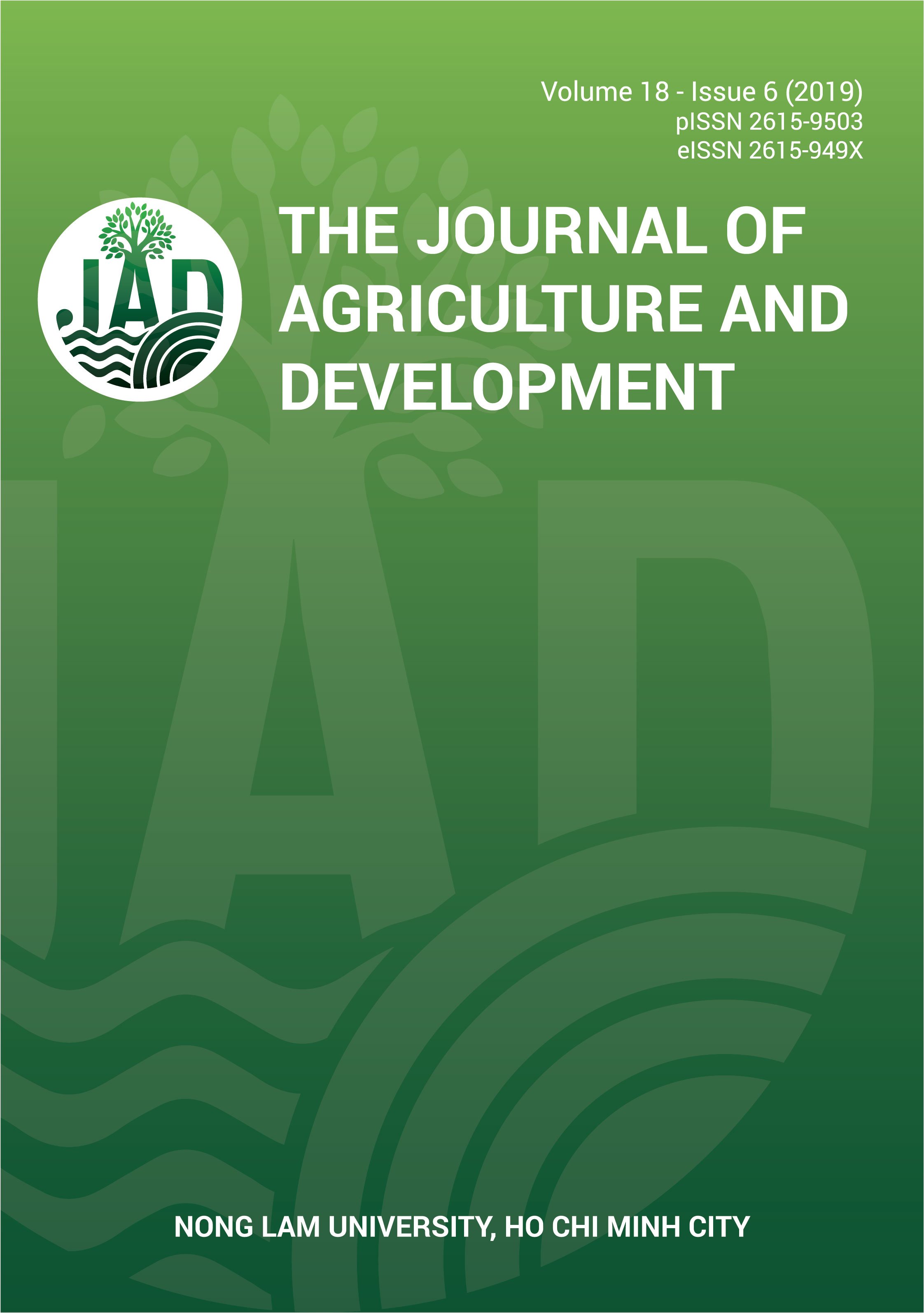Production of seaweed snack from pangasius (Pangasius hypophthalmus) fillet by-products
Main Article Content
Abstract
By-products from pangasius fillet processing are a good source to create a new value-added product such as snack. In this study, the effects of seaweed ratio, seasoning ratio, drying and frying conditions on sensory, texture, water holding capacity and moisture of product were investigated to find the best quality of the product.
The results showed that seaweed-added products had a better texture as compared to seaweed non-added products. However, seaweed addition > 3% weakened the product's texture. The appropriate seaweed ratio was 1%. The spice ratio (0.2% salt : 0.3% sugar : 0.1% monosodium glutamate (MSG) : 0.1% chili powder) was most favoured. The product (size 30 x 30 mm and thickness of 2 mm) was dried at 80oC in 105 min, to the final moisture of 8.17% ± 0.04. The product was fried by shortening for 20 sec at 180oC and resulted in the highest sensory quality.
Article Details
References
Damodaran, S. (1994). Structure-function relationship of food proteins. In Hettiarachchy, N. S., and Ziegle, G. R. (Eds.). Protein functionality in food systems (1st ed., 1-38). New York, USA: Marcel Dekker.
Dharmananda, S. (2002). The nutritional and medicinal value of seaweeds used in Chinese medicine. Retrieved January 07, 2019, from The Nutritional and Medicinal Value of Seaweeds Used in Chinese Medicine (itmonline.org).
Fligner, K. L., & Mangino, M. E. (1991). Relationship of composition to protein functionality. In Parris, N. and Barford, R. (Eds.). Interactions of food proteins (1st ed., 1-12). Washington, USA: American Chemical Society.
Ha, D. T. (2006). Food sensory analysis techniques. Ha Noi, Vietnam: Science and Technics Pulishing House.
Haug, I. J., & Draget, K. I. (2011). Gelatin. In Phillips, G. O., and William, P. A. (Eds.). Handbook of food proteins (1st ed., 92-115). Cambridge, UK: Woodhead Publishing. https://doi.org/10.1533/9780857093639.92
Hoang, M. (2016). Development of seaweed industry in Vietnam. Retrieved January 07, 2019, from trang17-18.pdf (cesti.gov.vn)
Kinsella, J. E., Damodaran, S., & German, J. B. (1985). Physicochemical and functional properties of oilseed proteins with emphasis on soy proteins. In Altshul, A. M., and Wilcke, H. L. (Eds.). New proteins foods: Seed storage proteins (1st ed., 107-179). New York, USA: Academic Press.
Mallawaarachchi, V. (2017). Maillard reaction - The science of browning, flavoring and aroma. Retrieved January 07, 2019, from https://vijini.medium.com/maillard-reaction-the-science-of-browning-flavoring-and-aroma-1605133960ae.
Matsumura, Y., & Mori, T. (1996). Gelation. In Hall, G. M. (Ed.). Methods to testing protein functionality (1st ed., 76-109). New York, USA: Blackie Academic & Professional.
Mulvihill, D. M., & Kinsella, J. E. (1987). Gelation characteristics of whey protein and b-lactoglobulin. Food Technology 41, 102-111.
Pilosof, A. M. R. (2000). Gelificaci´on. In Pilosof, A. M. R., and Bartholomai, G. B. (Eds.). Caracterizacion funcional y estructural de proteinas (1st ed., 75-77). Buenos Aires, Argentina: Eudeba.
Skipnes, D., Østby, M. L., & Hendrickx, M. E. (2007). A method for characterising cook loss and water holding capacity in heat treated cod (Gadus morhua) muscle. Journal of Food Engineering 80(4), 1078-1085. https://doi.org/10.1016/j.jfoodeng.2006.08.015
VASEP (Vietnam Association of Seafood Exporters and Producers). (2019). Reference list Vietnam association of seafood exporters and producers, 2019. Gold mine from aquatic by-products. Retrieved August 02, 2019, from http://vasep.com.vn/Tin-Tuc/1112_54186/Mo-vang-tu-phu-pham-thuy-san.htm.
Wong, D. W. S. (Ed.). (1989). Mechanism and theory in food chemistry (2nd ed.). New York, USA: Springer International Publishing. https://doi.org/10.1007/978-3-319-50766-8
Zayas, J. F. (1997). Functionality of proteins in food (1st ed.). New York, USA: Springer-Verlag Berlin Heidelberg. https://doi.org/10.1007/978-3-642-59116-7








